
Sowing Seeds Outdoors in Spring and Summer
Nancy DuBruleShare
Sowing Seeds Outdoors in the Spring and Summer
By: Nancy DuBrule-Clemente

When we think about sowing seeds, what often comes to mind is sowing seeds indoors, under lights. I do a bit of that in my house, but I am very limited by space. Oh, what I wouldn’t give for a greenhouse! It is certainly one of the top dreams on my bucket list. Until then, I have figured out a way to grow many of my favorite plants from seed outdoors.
STARTING SEEDS OUTDOORS IN FLATS
In my courtyard, I have set up a potting table. It is metal, very sturdy, and has a big umbrella over the top. Starting in mid-May, I begin sowing seeds of warm season annual flowers and veggies in flats. I not only clean and reuse the plastic seed starting packs that I buy (filled with plants, of course) from Natureworks, I also have invested in some really sturdy, rectangular, wooden seed sowing flats. On my work table I have a potting caddy, a bucket with labels and a waterproof pen, and stacks of clean 3” and 4” pots. I also have a pint jar of pre-mixed Stress-X, a seaweed powder that I use to soak my seedlings when I transplant them. A covered galvanized barrel with seed starting soil and another filled with container soil sit below.

The first thing I start is zinnias. I LOVE zinnias and cannot garden without them. BUT, the selections of zinnias available in the marketplace is usually limited to a few varieties. I like cactus flowering forms, certain single colors in great quantity (orange and purple and deep coral in particular) and I adore the wonderfully patterned ‘Zowie’, ‘Jazzy’, and ‘Whirlygig’ varieties. I sow rows horizontally across a rectangular wooden seed tray, one or two per variety, and label them with my waterproof marker. I water them gently and put them on the stone courtyard to germinate. If the weather is still a bit cool, I place the trays in my cold frame , which also sits in the courtyard, and close the cover if needed. But the stones absorb the sun’s warmth and the seeds usually germinate very quickly.
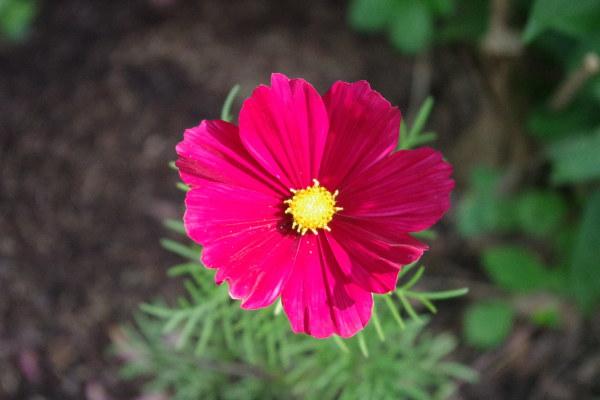
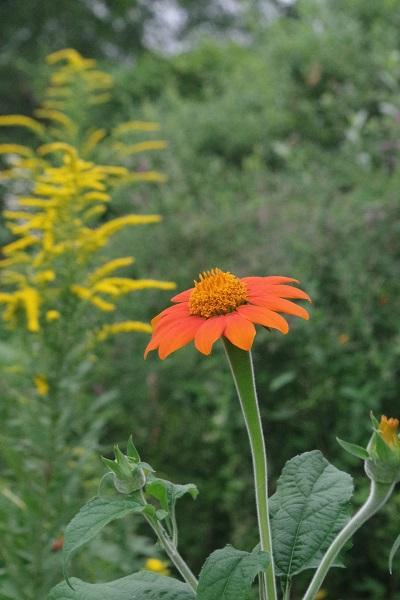
I repeat this process with another flat a week or two later. By then, it is late May or early June and the weather has really warmed up. The seeds practically leap out of the soil! My second sowing includes Tithonia (Mexican sunflowers), Cosmos ‘Rubenza’, more zinnias, and any other fun annuals that I want to try. Favorites include love-lies-bleeding (Amaranthus caudatus ‘Coral Fountain’), Joseph’s Coat amaranth, Cardinal climber vine (I soak these, morning glories, and moonflowers for 24 hours first), Emilia javonica (Tassel flower), and Mina lobata (Spanish flag vine).
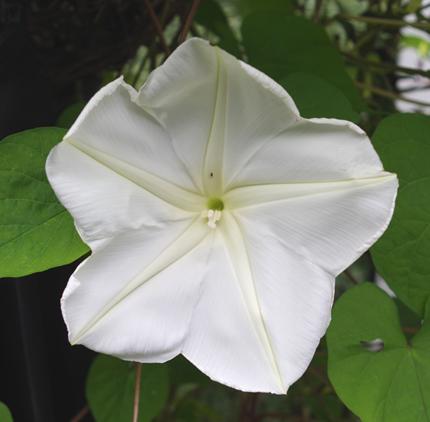
By early June, I am keeping an eye on the first seedling flat. As soon as the plants grow a set or two of true leaves, I separate them and either pot them on or plant them directly in the garden. I take a shallow basin and fill it with liquid seaweed water. I lift a small clump of seedlings, set them in the water, and gently tease them apart. This requires patience and courage! But it is also a wondrous experience to realize just how many baby plants you can get from a single packet of seeds. If I do this on an overcast day, or even if it is sprinkling, I often just plant my baby seedlings directly into a prepared bed. I then set up stakes and cover the patch with floating row cover fabric as a roof to keep them protected for a few days until they settle in.

If I am really busy and haven’t had time to prepare the planting beds, I often just move them up to a 3” or 4” pot for a week or two. In that case I use container planting mix, not seed starting soil, as it a bit heavier. I also feed the plants with a dilute solution of liquid organic fertilizer such as Sustane Flourish or fish emulsion.
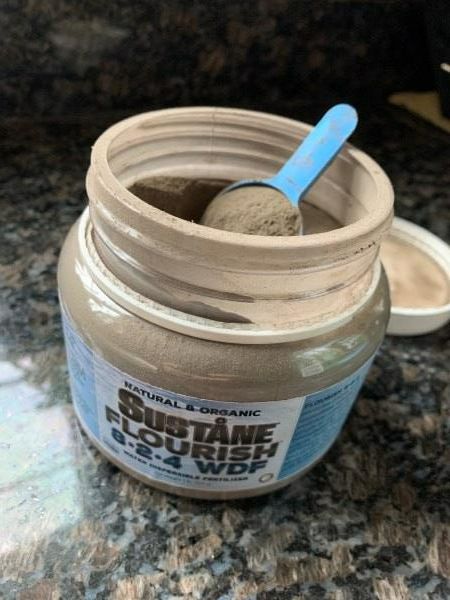
One of my favorite flowers to plant in mid-June for fall color is Amaranthus ‘Hot Biscuits’. When transplanted into the garden in early July (usually in a spot where an early spring crop such as lettuce or spinach grew), it shoots up quickly, eventually reaching 6 feet or more in fall. The dramatic plumes of orange flowers are the ideal eye-catching plant for September and October.

Late June and July brings me to the next phase of outdoor seed starting. Last year I had great success pre-starting escarole and ‘Ezrilla’ lettuce in flats and transplanting them directly into the garden in early August. Again, I shaded them with a roof of floating row cover as they settled in, removing it when the weather finally cooled down in early September. Escarole is one of the easiest greens to grow. It is not bothered by insects and takes a wide range of temperatures. I harvested my escarole right up until the hard frost in mid-November. ‘Ezrilla’ lettuce is a fairly new variety that I really like because after you harvest the first head of leafy, succulent lettuce, it regrows new smaller heads and side shoots. Again, I was eating this lettuce until very late fall.
You may ask “Why sow in flats when you can sow in the ground?” I do so because it gives me a lot more control and a lot more plants! By soaking and separating seedlings, you can use practically every single one that you grow. This means you have plenty for yourself and plenty to give away as gifts or trade with friends! Also, I can time my plantings directly into the garden beds to happen as earlier, cool season plants are finished. I always add lots and lots of annuals to my raised beds where I grow my vegetables. This helps not only with pollination, but it also attracts beneficial insects which help control the bad bugs.
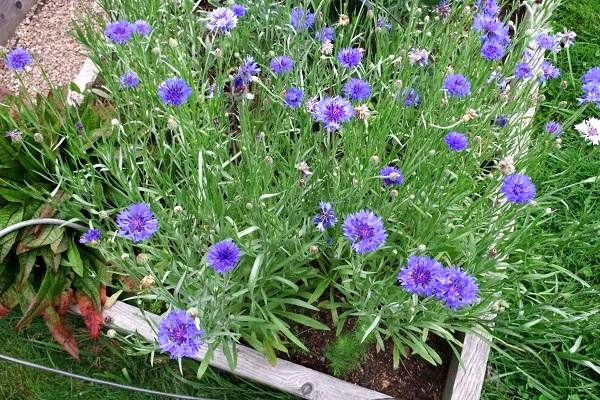
DIRECT SOWING SEEDS INTO THE GARDEN
I do direct sow some cool season, annual flowers right into the garden in mid-March. I have had excellent luck with annual bachelor’s buttons, calendula, and larkspur as they can take to cool soil at that time of year. I also direct sow vegetables such as escarole, lettuce, kale, and peas (which I soak first for 24 hours) in April as soon as the soil can be worked.
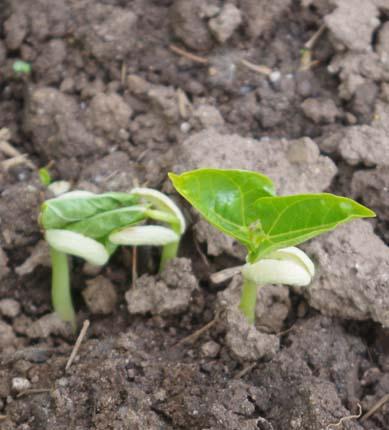
In late spring and summer, I direct seed sow vegetables as well. Beans are a special case. I sow ‘Emirite Filet’ French haricot vert pole bean seeds in late May. I have found that if I keep picking and feeding this superior variety of pole beans, they will keep producing until the fall. In mid-July, I sow BUSH beans as they do not take as long to produce a crop before the first fall hard killing frost. Winter squashes are direct sown in late May, early June at the latest as they need a long season to mature. I sow cucumbers and summer squashes every two weeks from late May until mid-July. Carrots and beets are direct sown into fabric Smart Pots both in spring and in late summer for a fall crop. I use Smart Pots for these root crops as my soil is very rocky and it is heavy clay. Even with years of adding compost and other organic soil amendments, I find the root crops do a lot better in Smart Pots.

In July, I also do another sort of seed sowing: biennials. For the past few years, I have been starting sweet Williams and foxgloves in flats in July, potting them up in early August, and planting them directly in the garden in late fall. I find this so much more efficient than simply sprinkling seeds and hoping for the best, especially because my gardens are packed solid in July and seedlings don’t have a chance!
I was inspired to write this article on growing plants from seed by a conversation I had in the winter with a Natureworks customer at our annual Seedy Celebration weekend in early February. She told me that she asked her garden club “How many of you grow plants from seed?” and she was shocked by how few hands were raised. I was shocked too. Growing plants from seed is one of the oldest tradition known to gardeners. It saves you money, offers you the opportunity to grow varieties you may never find in the garden center, and invites you to SLOW DOWN. The older I get, the more I enjoy growing plants from seed. Perhaps in my younger years, so chaotic and filled with work, I didn’t have the time or the patience to focus on seeds that much. But now, I am thrilled to have discovered the joy of seed sowing and want to teach everyone how to join my in this fun and rewarding practice.
